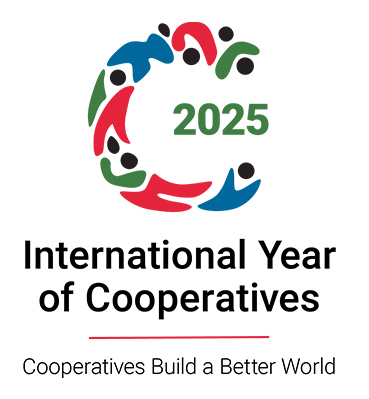Registration of Marriages which have already been solemnised.
Q.Where do I have to go and during which hours?
- To the office of Sub-Divisional Magistrate in whose jurisdiction any of the husband or wife resides, during 9.30 a.m. to 1.00 p.m. on any working day. Click Here to obtain the contact address of the SDM in whose jurisdiction in your colony lies
Q.Which papers/documents/fees, do I take with me?
- Application form duly signed by both husband and wife.
- Fee of Rs.100/- is to be deposited with Marriage Clerk and the receipt is to be appended with the form.
- Self attested documentary evidence of date of birth of both parties. (Matriculation Certificate/Passport/Birth Certificate)
- Self attested residential Proof of both the parties (Voter I-Card/Ration Card/Driving Licence/Passport etc.).
- Self attested Marriage Invitation card, if available.
- Separate affidavits in prescribed format from Husband & Wife giving:-
- Date and place of marriage.
- Date of Birth.
- Martial status at the time of marriage.
- Affirmation that the parties are not related to each other within the prohibited degree of relationship as per Hindu Marriage Act.
- Citizen ship
- For the purpose of identification, the proof may be in the form of a certificate containing the attested photographs of the Husband & Wife duly attested by any officer/official of central or state governments or Union Territory Administration of PSU/autonomous bodies whose identity can be established or by any person having PAN of Income Tax.
- Passport size photograph of both the parties (2 Copies each) as well as their Ceremonial photographs duly attested by any officer official of central or state governments or Union Territory Administration of PSU/autonomous bodies whose identity can be established or by any person having PAN of Income Tax.
- Attested copy of divorce decree/order in case of a divorce and death certificate of spouse in case of widow/widower
- Where marriage has been solemnized at a religious place, a certificate from the priest is required
- In case of a foreign national, a certificate from the Embassy concerned regarding his or her present martial status
- In case one of the parties belong to other than Hindu, Budhist, Jain and Sikh religions, a conversion certificate from the priest who solemnized the marriage is required
- The applicants have to apply for registration of marriage to the office of the Deputy Commissioner in whose territorial jurisdiction either of the applicants resides
- If the marriage is solemnized in Delhi but the applicants were not residing in Delhi, application for registration of the marriage shall have to be made to office of the Deputy Commissioner in whose jurisdiction the marriage has been solemnized.
Q.What will be the criteria used while deciding my case?
- Hindu Marriage Act
Verification of all the documents is carried out on the date of application and a day is fixed and communicated to the parties for registration. On the said day, both parties, alongwith a Gazetted Officer who attended their marriage, need to be present before the SDM. The Certificate is issued on the same day. - Special Marriage Act
Both parties are required to be present after submission of documents for issuance of public notice inviting objections. One copy of notice is pasted on the notice board of the office and copy of the notice is sent by registered post to both parties as per address given by them. Registration is done 30 days after the date of notice after deciding any objection that may have been received during that period by the SDM. Both parties alongwith three witnesses are required to be present on the date of registration.
Q.What are the relevant Forms?
- Click Here for Application Form for registration of marriage under Hindu Marriage Act.
- Click Here for Application Form for registration of marriage under Special Marriage Act.
- Click Here for Identification Certificate a)any person having PAN of income Tax (OR) b) any officer/official of Central or State govt. or UT Administration or PSU/Autonomous bodies whose identity can be established
- Click Here for Affidavit
Q.When will I get a response?
- You should be getting a response normally within 15 days in case of registration of marriage under Hindu Marriage Act and 60 days under Special Marriage Act.
Solemnisation of Marriage under Special Marriage Act
- Special Marriage Act, 1954 provides for solemnisation of marriages in accordance with the provisions of the Act. SDMs/ADMs/Deputy Commissioners have been authorised as Marriage Officers for this purpose.
Q.Where do I have to go and during which hours?
- To the office of Sub-Divisional Magistrate in whose jurisdiction any of the husband or wife resides, during 9.30 a.m. to 1.00 Noon on any working day. Click Here to obtain the contact address of the SDM in whose jurisdiction in your colony lies.
Q Which papers/documents/fees, do I take with me?
- Application form duly filled and signed by the bride and the groom.
- Fee of Rs.15/- is to be deposited with cashier of District and the receipt should be attached with the form.
- Documentary evidence of date of birth of both parties (Matriculation Certificate/Passport/Birth Certificate).
- Documentary evidence regarding stay in Delhi of one of the parties for more than 30 days (ration card or report from the concerned SHO).
- Separate affidavits from bride and groom giving:
- Date of birth.
- Present marital status: unmarried/widower/ divorcee.
- Affirmation that the parties are not related to each other within the degree of prohibited relationship defined in the Special Marriage Act.
- Passport size photographs of both parties (2 copies each) duly attested by a Gazetted Officer.
- Copy of divorce decree/order in case of a divorcee and death certificate of spouse in case of widow/widower.
Q.What will be the criteria used while deciding my case?
- For solemnization of marriage, presence of both parties is required after submission of documents of issuance of notice of intended marriage. A copy of the notice is pasted on the office notice board by the SDM. Any person may within 30 days of issue of notice , file objection to the intended marriages. In such a case, the SDM shall not solemnise the marriage until he has decided the objection, within 30 days of its receipt. If the SDM refuses to solemnise the marriage, any of the parties may file an appeal within 30 days to the District Court. In case no objection is received, the SDM solemnises the marriage after 30 days of the notice. Both parties alongwith 3 witnesses are required to be present on the date of solemnisation of marriage. It is advisable to submit names of witnesses atleast one day in advance.
Q.What are the relevant Forms?
- Click Here for relevant Form
Q.When will I get a response?
- You should be getting a response normally within 60 days.
- Degree of Prohibited relationship as per the Hindu Marriage Act, 1955
Section 3 (f):
- "Sapinda relationship" with reference to any person extends as far as the third generation (inclusive) in the line of ascent through the mother, and the fifth (inclusive) in the line of ascent through the father, the line being traced upwards in each case from the person concerned, who is to be counted as the first generation;
- two persons are said to "sapindas" of each other if one is a lineal ascendant of the other within the limits of sapinda relationship, or if they have a common lineal ascendant who is within the limits of sapinda relationship with reference to each of them;
Section 3 (g):
- "degrees of prohibited relationship" – two persons are said to be within the "degrees of prohibited relationship" –
- if one is a lineal ascendant of the other; or
- if one was the wife or husband of a lineal ascendant or descendant of the other; or
- if one was the wife of the brother or the father’s or mother’s brother or of the grandfather’s or grandmother’s brother of the other; or
- if the two are brother and sister, uncle and niece, aunt and nephew, or children of brother and sister or of two brothers or of two sisters;
Explanation – For the purposes of clauses 3(f) and 3(g), relationship includes –
- relationship by half or uterine blood as well as by full blood;
- illegitimate blood relationship as well as legitimate;
- relationship by adoption as well as by blood;
Degrees of Prohibited relationship as per the Special Marriage Act, 1954
"Degrees of prohibited relationship" – a man and any of the persons mentioned in Part I of the First Schedule and a woman and any of the persons mentioned in Part II of the said Schedule are within the degrees of prohibited relationship.
Explanation (I) –
Relationship includes, --
- relationship by half or uterine blood as well as by full blood;
- illegitimate blood relationship as well as legitimate;
- relationship by adoption as well as by blood; and all terms of relationship in this Act shall be construed accordingly.
Explanation (II) –
- "Full blood" and "half blood" – two persons are said to be related to each other by full blood when they are descended from a common ancestor by the same wife and by half blood when they are descended from a common ancestor but by different wives.
Explanation (III)–
- "Uterine blood" – two persons are said to be related to each other by uterine blood when they are descended from a common ancestress but by different husbands.
Explanation (IV)–
- In Explanations II and III, "ancestor" includes the father and "ancestress" the mother;
The First Sshedule [Degree of Prohibited Relationship
PART – I
- Mother.
- Father’s widow (step mother).
- Mother’s mother.
- Mother’s father’s widow (step grand-mother).
- Mother’s mother’s mother.
- Mother’s mother’s father’s widow (step great grand-mother).
- Mothers’s father’s mother.
- Mother’s father’s father’s widow (step great grand-mother).
- Father’s mother.
- Father’s father’s widow (step grand-mother).
- Father’s mother’s mother.
- Father’s mother’s father’s widow (step great grand-mother).
- Father’s father’s mother.
- Father’s father’s father’s widow (step great grand-mother).
- Daughter.
- Son’s widow.
- Daughter’s daughter.
- Daughter’s son’s widow.
- Son’s daughter.
- Son’s son’s widow.
- Daughter’s daughter’s daughter.
- Daughter’s daughter’s son’s widow.
- Daughter’s son’s daughter.
- Daughter’s son’s son’s widow.
- Son’s daughter’s daughter.
- Son’s daughter’s son’s widow.
- Son’s son’s daughter.
- Son’s son’s son’s widow.
- Sister.
- Sister’s daughter.
- Brother’s daughter.
- Mother’s sister.
- Father’s sister.
- Father’s brother’s daughter.
- Father’s sister’s daughter.
- Mother’s sister’s daughter.
- Mother’s brother’s daughter
Explanation –
- For the purposes of this Part, the expression "widow" includes a divorced wife.
PART – II
- Father.
- Mother’s husband (step-father).
- Father’s father.
- Father’s mother’s husband (step grand-father).
- Father’s father’s father.
- Father’s father’s mother’s husband (step great grand-father).
- Father’s mother’s father.
- Father’s mother’s mother’s husband (step great grand-father).
- Mother’s father.
- Mother’s mother’s husband (step grand-father).
- Mother’s father’s father.
- Mother’s father’s mother’s husband (step great grand-father).
- Mother’s mother’s father.
- Mother’s mother’s mother’s husband (step great grand-father).
- Son.
- Daughter’s husband.
- Son’s son.
- Son’s daughter’s husband.
- Daughter’s son.
- Daughter’s daughter’s husband.
- Son’s son’s son.
- Son’s son’s daughter’s husband.
- Son’s daughter’s son.
- Son’s daughter’s daughter’s husband.
- Daughter’s son’s son.
- Daughter’s son’s daughter’s husband.
- Daughter’s daughter’s son.
- Daughter’s daughter’s daughter’s husband.
- Brother.
- Brother’s son.
- Sister’s son.
- Mother’s brother.
- Father’s brother.
- Father’s brother’s son.
- Father’s sister’s son.
- Mother’s sister’s son.
- Mother’s brother’s son.


 Department of Revenue
Department of Revenue 


